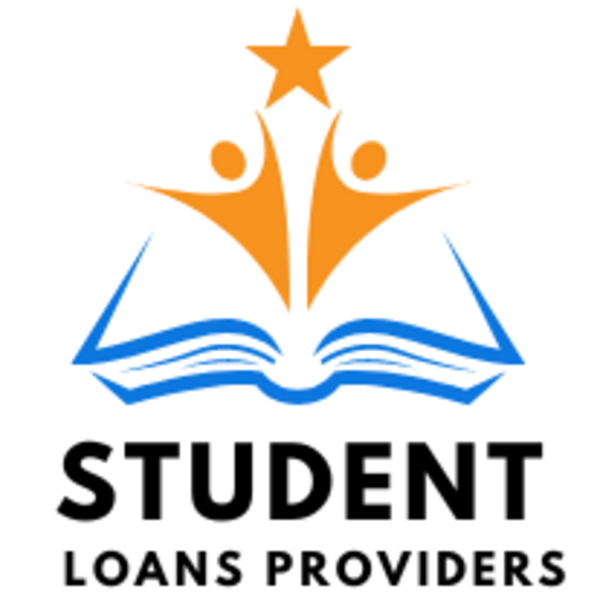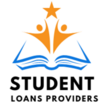Student Loans For Canada
Student Loans in Canada including Fees, Rates, and Repayment Strategies
In pursuit of higher education, many students turn to student loans to fund their studies. In Canada, various options exist to support students in financing their education, ranging from government-sponsored programs to private lending institutions. Understanding the eligibility criteria, documentation requirements, and the types of loans available is crucial for students planning their educational journey. This comprehensive guide aims to provide insight into student loans for Canada, covering topics such as eligibility criteria, documentation required, education loans by banks, private loans for college, and aspects of loan forgiveness student loans..
Eligibility Criteria for Student Loans in Canada
Eligibility for student loans in Canada varies depending on the type of loan and the province in which the student resides or plans to study. Generally, to be eligible for government-sponsored loans, students must:
- Be a Canadian citizen, a permanent resident, or a protected person
- Be enrolled in a designated educational program at a recognized institution on a full-time or part-time basis
- Demonstrate financial need, as determined by the respective province or territory
- Maintain satisfactory academic progress throughout the duration of their studies
Specific eligibility requirements may also include factors such as family income, dependency status, and previous educational funding.
Documentation Required for Student Loans
When applying for student loans in Canada, applicants are typically required to submit various documents to support their loan application. Common documentation includes:
- Proof of Canadian citizenship, permanent residency, or protected person status
- Social Insurance Number (SIN)
- Information regarding the educational institution and program of study
- Financial information, including income tax returns, bank statements, and proof of assets and liabilities
- Any additional documentation requested by the provincial or federal loan provider
Ensuring that all required documentation is accurately completed and submitted is essential to expedite the loan approval process.
Education Loans Offered by Banks in Canada
In addition to government-sponsored student loans, many banks and financial institutions in Canada offer education loans to eligible students. These loans may feature competitive interest rates, flexible repayment terms, and customizable borrowing limits. While the specific terms and conditions of bank-sponsored education loans vary between institutions, prospective borrowers are encouraged to explore the options available and compare loan offerings to determine the most suitable financing solution for their needs.
Private Loans for College Education
In certain cases, students may opt to secure private loans from non-governmental lenders to finance their college education. Private student loans for college typically require a creditworthy cosigner and may offer variable or fixed interest rates, depending on the lender's policies. While private loans can provide additional funding options for students, it is important to carefully review the terms and conditions, including repayment obligations and interest rates, before committing to a loan agreement.
Loan Forgiveness Programs for Canadian Students
Loan forgiveness programs offer relief to students burdened by student loan debt by forgiving a portion or all of their outstanding loan balance under specific circumstances. In Canada, various loan forgiveness programs exist at both the provincial and federal levels, aimed at supporting students in repayment of their educational loans. Some key keywords and concepts related to loan forgiveness programs in Canada include:
- Student Loan Forgiveness: A program that provides relief to eligible borrowers by forgiving a portion of their student loan debt.
- Education Loan Forgiveness: Initiatives designed to alleviate the financial burden of educational loans for qualifying individuals.
- Study Loan Forgiveness: Programs that offer loan forgiveness incentives to students pursuing higher education in specific fields or occupations.
- Discover Student Loan: A private lender that offers student loans with various repayment options and terms.
- Student Loan Repayment: Strategies and options available to borrowers for repaying their student loans in a timely and manageable manner.
Student Loan Forgiveness Updates and Resources
Given the evolving nature of student loan forgiveness programs and policies, staying informed about updates and resources is essential for borrowers seeking relief from student loan debt. Regularly monitoring official government websites, financial aid resources, and reputable news sources can provide valuable insights into changes in loan forgiveness programs, eligibility criteria, and application processes.
Navigating the realm of student loans in Canada demands a deep understanding of various facets, including loan amounts, coverage, the loan process, security, and disbursement protocols. This guide aims to unravel these crucial aspects to empower students in making informed decisions regarding their educational financing.
Loan Amounts: Determining Financial Support
The loan amounts available to students in Canada can vary based on factors such as the student's financial need, the cost of education, and the type of loan program. Government-sponsored loans typically have predefined borrowing limits, which may cover tuition fees, living expenses, books, and other essential educational costs. The specific loan amounts accessible to students are subject to annual revisions and may differ between provinces and territories. It is essential for students to assess their financial requirements accurately and borrow responsibly to avoid undue financial strain in the future.
Loan Coverage: Financing Educational Expenses
Student loans in Canada are designed to cover a wide range of educational expenses, including:
- Tuition fees: The primary component of student loans, covering the cost of academic instruction and related services.
- Living expenses: Funds allocated to support students' accommodation, food, transportation, and other day-to-day necessities during their academic pursuits.
- Books and supplies: Financial assistance for purchasing textbooks, study materials, and other essential resources essential for academic success.
- Miscellaneous expenses: Additional allowances to address unforeseen costs and emergencies that may arise during the course of studies.
Understanding the extent of loan coverage enables students to plan their finances effectively and allocate resources judiciously to meet their educational needs.
The Loan Process: From Application to Approval
The process of obtaining a student loan in Canada typically involves several key stages:
- Application: Students must complete and submit a loan application form, providing accurate personal and financial information as required by the lending institution or government agency.
- Assessment: Loan applications are reviewed and assessed to determine eligibility based on factors such as financial need, academic status, and program of study.
- Approval: Upon successful evaluation, loan approval is granted, and borrowers receive confirmation of their loan eligibility, including details regarding loan amounts, terms, and conditions.
- Disbursement: Once approved, loan funds are disbursed directly to the educational institution or deposited into the borrower's bank account, as per the established disbursement schedule.
Maintaining open communication with loan providers and adhering to application deadlines are essential steps in facilitating a smooth and timely loan approval process.
Loan Security: Safeguarding Borrowed Funds
Student loans in Canada may require security or collateral to mitigate the lender's risk and ensure loan repayment. Government-sponsored loans typically do not necessitate collateral, as they are guaranteed by the government. However, private lenders may require collateral or a creditworthy cosigner to secure the loan, especially for borrowers with limited credit history or insufficient income. Understanding the implications of loan security provisions is crucial for borrowers, as failure to meet repayment obligations may result in adverse consequences, including damage to credit ratings and potential legal action.
Loan Disbursement: Timely Allocation of Funds
Upon approval, student loan funds are disbursed according to the established disbursement schedule, which typically aligns with the academic term or semester. Disbursement protocols may vary between institutions and loan providers, with funds being transferred directly to the educational institution to cover tuition fees and other approved expenses. Any remaining funds are then disbursed to the borrower, either through direct deposit or by cheque, to address additional educational costs and living expenses. Timely disbursement of loan funds enables students to meet their financial obligations and focus on their academic pursuits without undue financial strain.
Understanding the intricacies of student loans in Canada, including loan amounts, coverage, the loan process, security, and disbursement protocols, is essential for students embarking on their educational journey. By equipping themselves with comprehensive knowledge and sound financial planning strategies, students can leverage student loans effectively to pursue their academic aspirations and build a solid foundation for future success.
In navigating the landscape of student loans in Canada, it is crucial for students to grasp the nuances of loan processing fees, interest rates, charges associated with specific lenders like Avanse, as well as repayment structures and options. This guide aims to provide clarity on these essential aspects to empower students in making informed decisions regarding their educational financing.
Navigating the landscape of student loans in Canada requires careful consideration of eligibility criteria, documentation requirements, loan options, and potential avenues for loan forgiveness. By understanding the various facets of student loan financing and remaining informed about available resources and updates, students can make well-informed decisions to support their educational aspirations while managing their financial obligations effectively.

